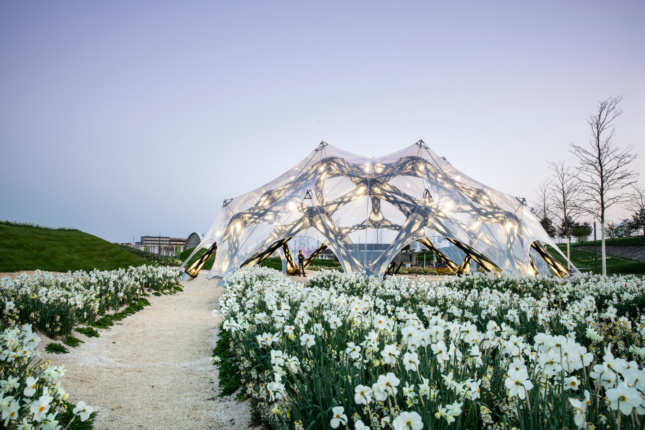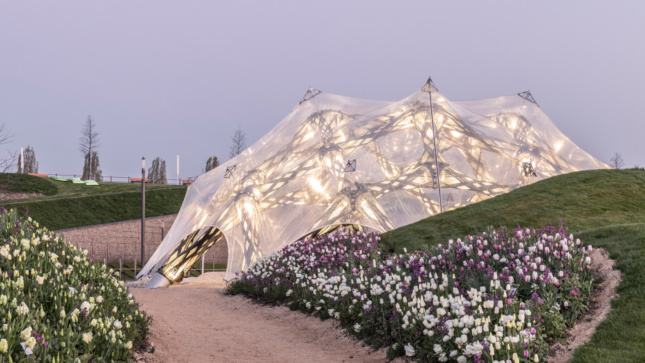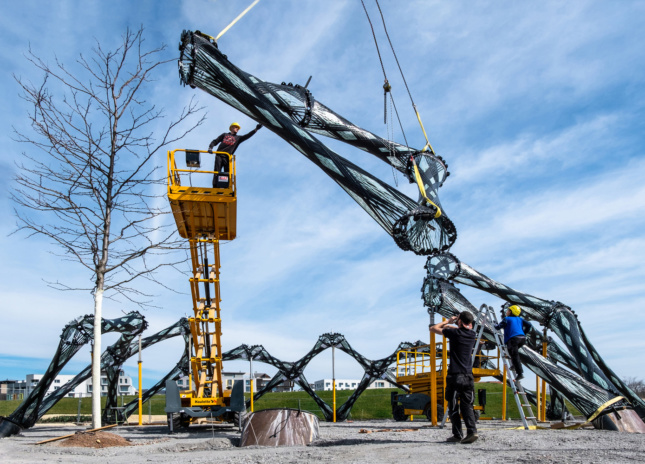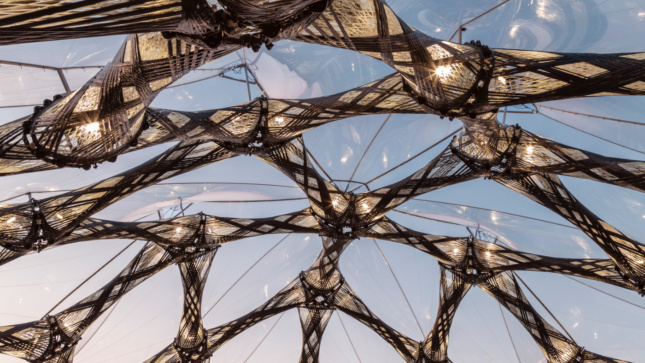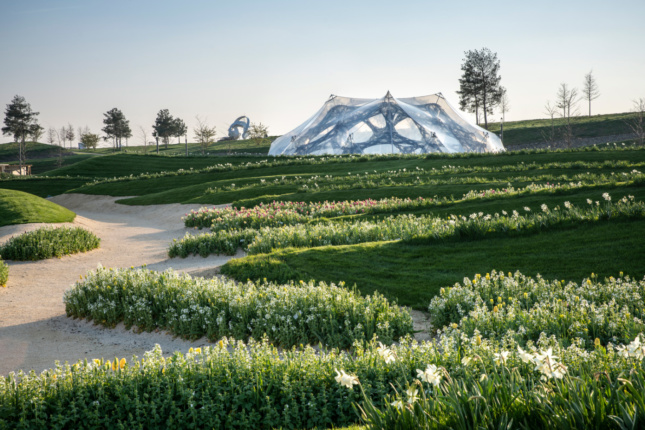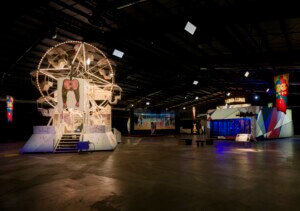Installed on the grounds of the 2019 Bundesgartenschau (BUGA) biennial horticulture show in Heilbronn, Germany, the BUGA Fibre Pavilion is a the product of years of research in biomimicry at the University of Stuttgart’s Institute for Computational Design and Construction (ICD) and the Institute for Building Structures and Structural Design (ITKE). Biomimetic design aims to produce structures, materials, and effects after principles and processes found in nature. In other words, the BUGA Pavilion is a not-so-primitive hut inspired by fauna rather than flora.
Specifically, the pavilion’s 60 woven structural components are inspired by fibrous biological composites like cellulose and chitin, which form insect wings and exoskeletons. Evolved over millions of years, these naturally occurring organic fibers are incredibly efficient and incredibly strong.
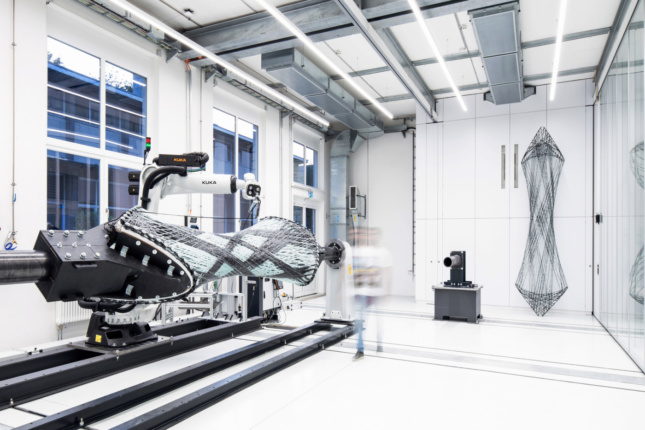
Adapting this principle to architecture, the Stuttgart team created the 4,300-square-foot BUGA Fibre Pavilion using half-a-million-square-feet of a human-made synthetic equivalent—glass- and carbon-fibers weaved together by a robot working between two rotating scaffolds. The resulting hollow warped cylindrical elements, which each took four-to-six hours to produce, resemble a toy finger trap. Workers connected them together on-site to form a dome shape spanning more than 75 feet. An appropriately advanced skin, translucent ethylene tetrafluoroethylene (ETFE), covers the fibrous synthetic muscle system.
The design process required intense computationally-powered iteration. Although complex, the manufacturing process is wondrously efficient, producing zero waste and obviating the need for any formwork. It’s also quite strong. Five times lighter than a comparable steel structure, each component can withstand 250 kilonewtons of compression force—or, as the design team notes, “the weight of more than 15 cars.”
The fabrication method recalls the futuristic 3D printer featured in the opening sequence of the HBO sci-fi series West World. The comparison is apt because the pavilion truly feels like something from the future. Indeed, as the researchers note, “Only a few years ago, this pavilion would have been impossible to design or build.” Thanks to the dramatic advancements in material science and our powers of scientific observation, the Stuttgart team was able to unite human innovation with natural principles to create something beautiful that perhaps transcends both science and art.






